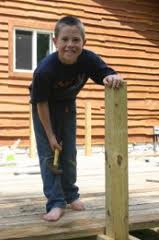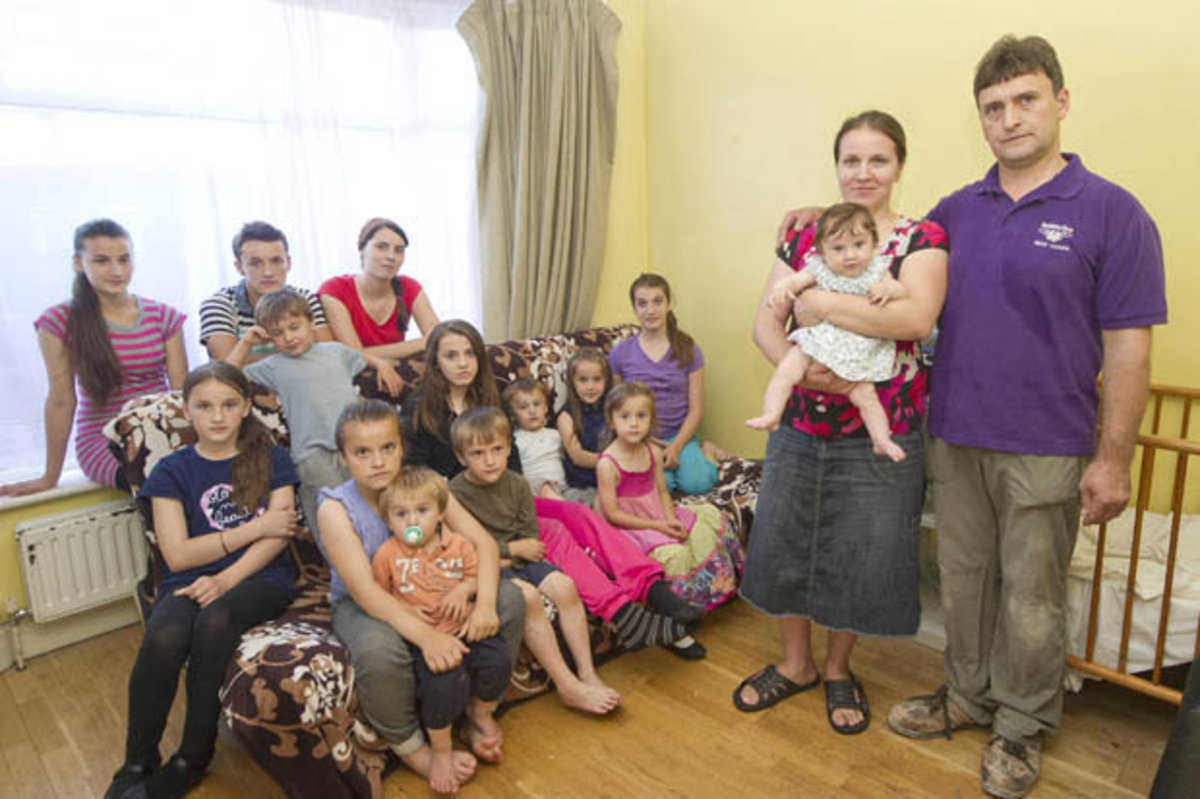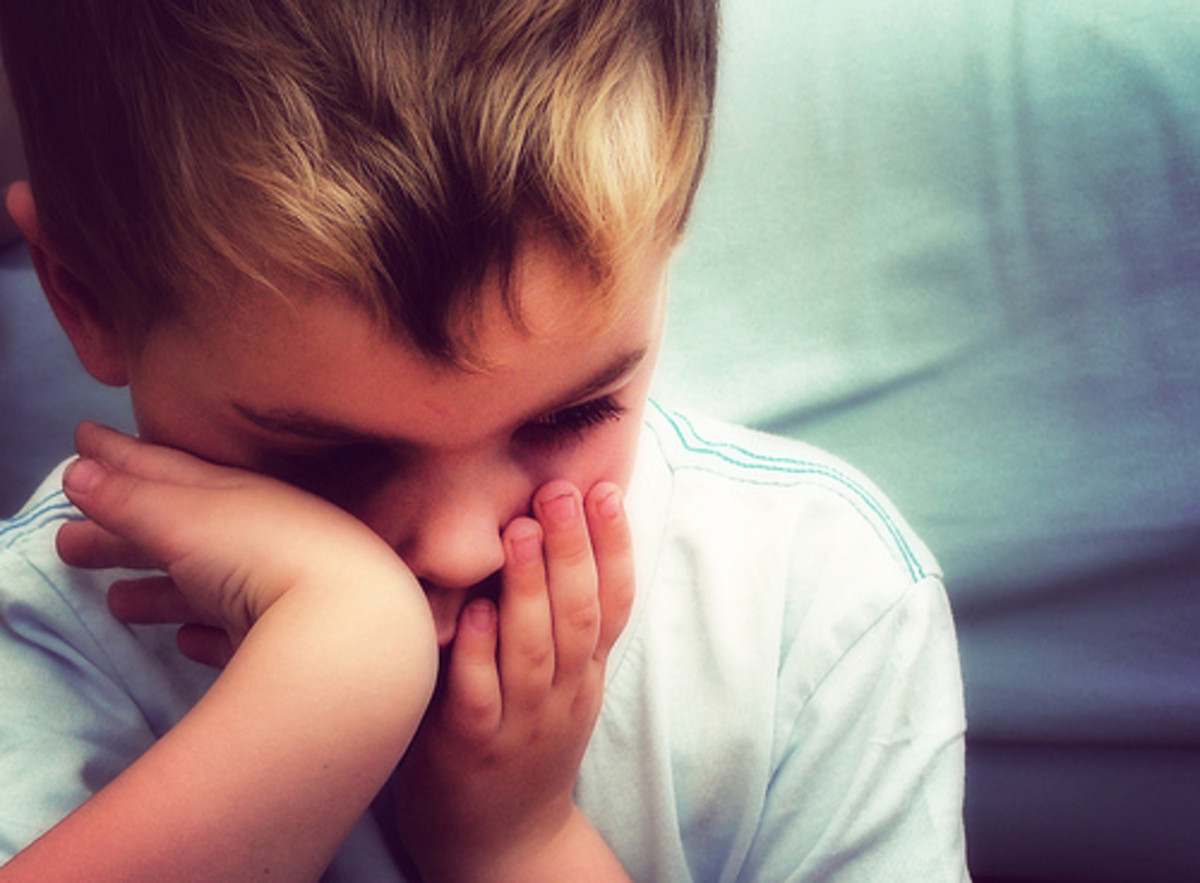The Middle Child In The Large And Very Large Family, Part 1/2

LOST in the Familial Shuffle



Must BECOME Self-Sufficient EARLY.....or SINK



Having VERY LITTLE or NO Sense of Self



Freest to...BE, Not So Encumbered By Roles & Expectations



What Am I, Who Am I, Where Am I
This hub is in two parts. I shall be discussing the middle child in the large to very large family(6 and more children per family) systems.
I. The Middle Child in the Family
Ah, the middle child, middle child. Who is the middle child and where does he/she fit into the family scheme? First of all, his/her position is often viewed as vague and is not clearly defined. This birth order position is often the most misunderstood.
II. The Middle Child as Enigmatic, Indecipherable and Even Unique
The middle child is considered to be the enigmatic one. There is no exact way to describe him/her. He/she is often beyond a clear descriptive definition. What is there to say about the middle child? Well, he/she is in a neither here nor there position. To say that this birth order position is oftentimes unfathomable and/or cryptic would be an understatement.
The middle child is also one of the most unique birth order positions. He/she is definitely not the oldest child. However, neither is he/she the youngest child. A more apt expression is that he/she is the in between child in the family.
III. The Middle Child in the Large/Very Large Family
In large and very large families, the position of the middle child can be varying. Some middle children are lost in the familial shuffle between their oldest/older and younger/youngest siblings. The average middle child in large and very large families do not receive the necessary individualized parental attention they need. Many feel that they have to become self-nurturing.
IV. Learning to be SELF-SUFFICIENT
Many middle children must become self-sufficient as they are not going to receive the parental attention and love that they need. In other words, they have to be their own parent so to speak. These are the children who raise themselves and navigate their way in life.
My elementary school classmate exemplified this. She is the middle of 20 children. Her parents, especially her mother, were overwhelmed by the sheer volume of their ever growing family. Since there was little or no parental attention, she had to raise and learn to take care of herself. She learned to read on her own as her parents and/or older siblings were too busy to ever teach her the rudiments. Whatever she learned, she learned on her own. She started being on her own from the time she was 6 years old.
As a result of being lost in the family shuffle and receiving little or no individualized parental attention, many middle children must learn to be independent at a very early age. They have to be independent in order to survive and thrive in their particular familial situation. They know that it would be an impossibility or near it for their parents and/or older siblings to give them the attention that they need and to take care of them, so they have to do these things for themselves.
This middle child is highly cognizant that his/her parents are too busy with the daily mechanisms of the family dynamic. He/she further realize that his/her oldest and some of the other older siblings are either involved with their own individual lives and/or busy raising or pinching in to raise the younger siblings. He/she knows that based upon the volume of the large family dynamic, he/she must develop ways of self-regulation and self-administration.
V. LEARNING to Parent and Care for SELF
The middle child in a large and very large family is aware of the importance of self-administration. He/she must oftentimes teach himself/herself the things that other children learn from their parents. He/she learns early in life that he/she must be a strong and resourceful person. If not, he/she will sink.
VI. Sometimes Falling Through the Cracks
While the stronger and more resourceful middle children in large and very large families survive and even thrive, the weaker and more needier ones fall through the family cracks. They often meander through childhood and adolescence until another adult authoritative figure notice them and try to help them with the problem at hand. If there is no outside adult authoritative figure to notice and help them, such children reach the point of no return.
An example of this is one of my maternal uncles. He is the middle of 10 children. He was severely intellectually challenged as a child. However, my maternal grandparents were so busy with the other children that he was left to his own devices. He was a poor student to say the least . Most subjects were difficult for him. He did not receive the help he needed regarding his studies. He soon dropped out of school. No one noticed this. He continued to meander and sink ever deeper. He decided to improve. He wanted better out of life. He started to teach himself to read and became a better reader. He decided that he had to become more independent because he did not want to sink any deeper.
VII. Being HIGHLY Independent
Of all large family groups, the middle child is the most independent and self-sufficient. Of course, he/she has to be. His/her parents simply do not have the time to give him/her the prerequisite parental attention that he/she needs. Furthermore, his/her oldest/older siblings have other familial responsibilities which includes chores, afterschool jobs, and raising/pinching in with younger/youngest siblings. In other words, the middle child in the large to very large family has no choice but to do or die. It is the survival of the most resilient and smartest so to speak.
The middle child in the large to very large family is likely to go his/her own way. Some middle children in large to very large families are loners. Because their parents and/or siblings are busy with their own respective lives, they seek solace in their own company. They contend that since their parents and siblings have little or no time for them, they must as well appreciate and cultivate their own company. These middle children are the most independent and resilient of all middle children.
VIII. Fading Into the Background, Becoming Anonymous, Even Lost in the Shuffle
Many middle children in large to very large families just become totally anonymous and fade into the background. This may be in response to being constantly overlooked or ignored by their parents in favor of the younger/youngest children in the family. Also, the sheer number of children in large to very large families cause some children to received individualized and undivided parental attention while others are overburdened and parentified and still others are left by the wayside, being emotionally neglected. The middle child in large and very large families fall into the last category.
Some middle children in large and very large families use the issue of becoming anonymous and fading into background as a psychological shield to cover up their hurt in being overlooked and ignored by their parents and/or oldest/older siblings. It is their contention that since they are continuously being considered to be personae non gratae by their significant others, either parents and/or older siblings, they will just get out of their family's way. They reason that by becoming anonymous, they won't be a nuisance, especially to their parents.
IX. Having NO Sense of Self
Such middle children oftentimes have little or no sense of self. They never received the proper parental reinforcement regarding their self-worth. They also believed that since they are being constantly ignored and/or otherwise overlooked in their families, they feel insignificant and worthless. They also feel that they were discarded by their parents in favor of their younger/youngest siblings who they believe are receiving more love and attention than they are.
X. Developing OUTSIDE Interests and Relationships
Many middle children in large and very large families develop outside interests and relationships to fill the void that is missing from their familial relationships. They are the ones who have outside friends and hobbies. They realize that it is a high improbability that their parents will be there for them so they will find others who will be their support system and give them the prerequisite attention they need.
XI. Developing a CLOSE Relationship with the Next Older Sibling/Siblings, Seeing THEM as Confidantes
There are some middle children in large and very large families who develop very close relationships with their next older sibling/siblings. They view such a sibling/siblings as a confidante who they find solace with. Still other middle children view an older sibling, depending on the latter's age, as a quasiparent who they can turn to in the place of the actual parent.
XII. Extremely Free, Not So Encumbered by Familial Roles and Expectations
In addition to being the most independent and self-sufficient of all large family groups, the middle child is also the freest. He/she is oftentimes not encumbered with massive familial responsibilities and having to be the second parent like his/her oldest sibling. Furthermore, he/she is not babied, infantilized, and/or excessively pampered like his/her youngest sibling. He/she has a lot of leeway to be whatever and whoever he/she desires to be.
Middle children in large and very large families, even though they may have some family responsibilities, it is never as much as their oldest counterparts. They are allowed to have some semblance of a normal childhood and/or adolescence. As they do not have the brunt of the familial responsibilities, they are freer to experiment and explore their respective childhood and/or adolescence.
© 2013 Grace Marguerite Williams








